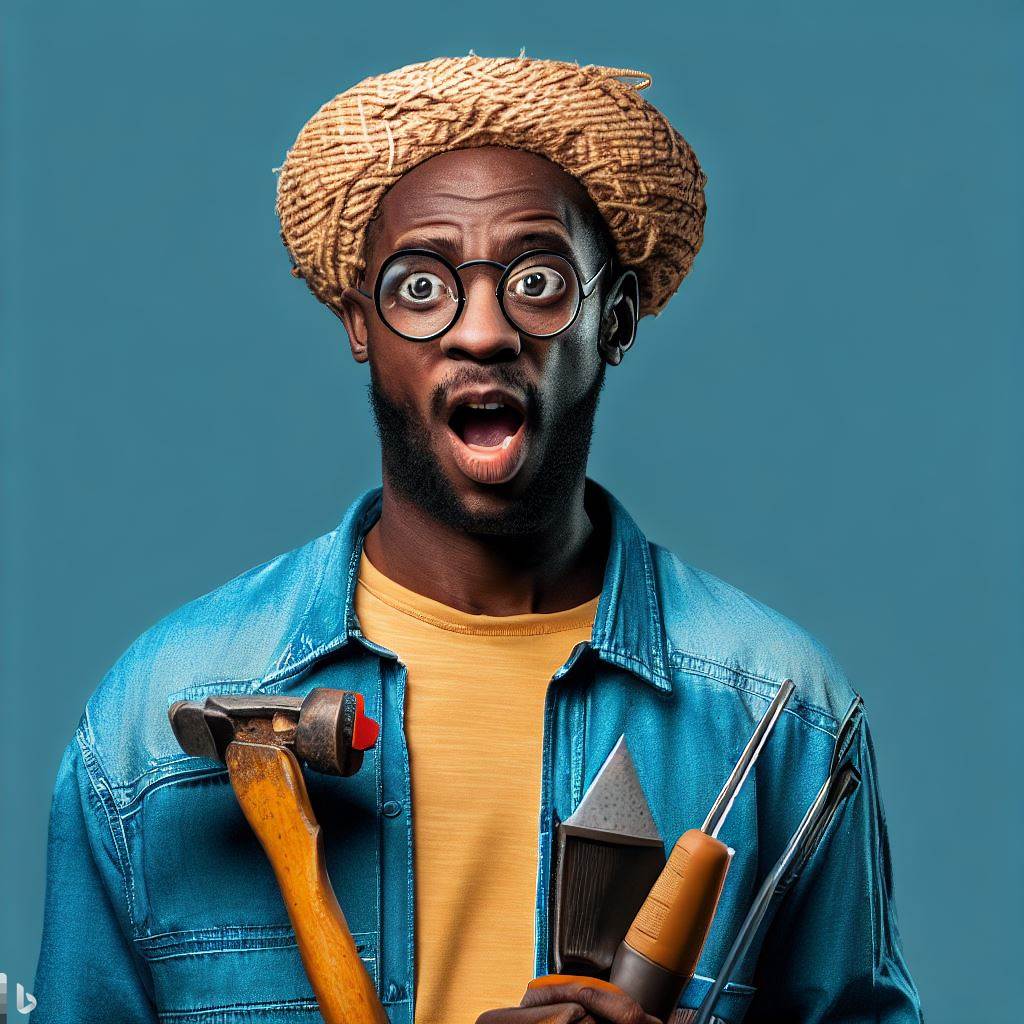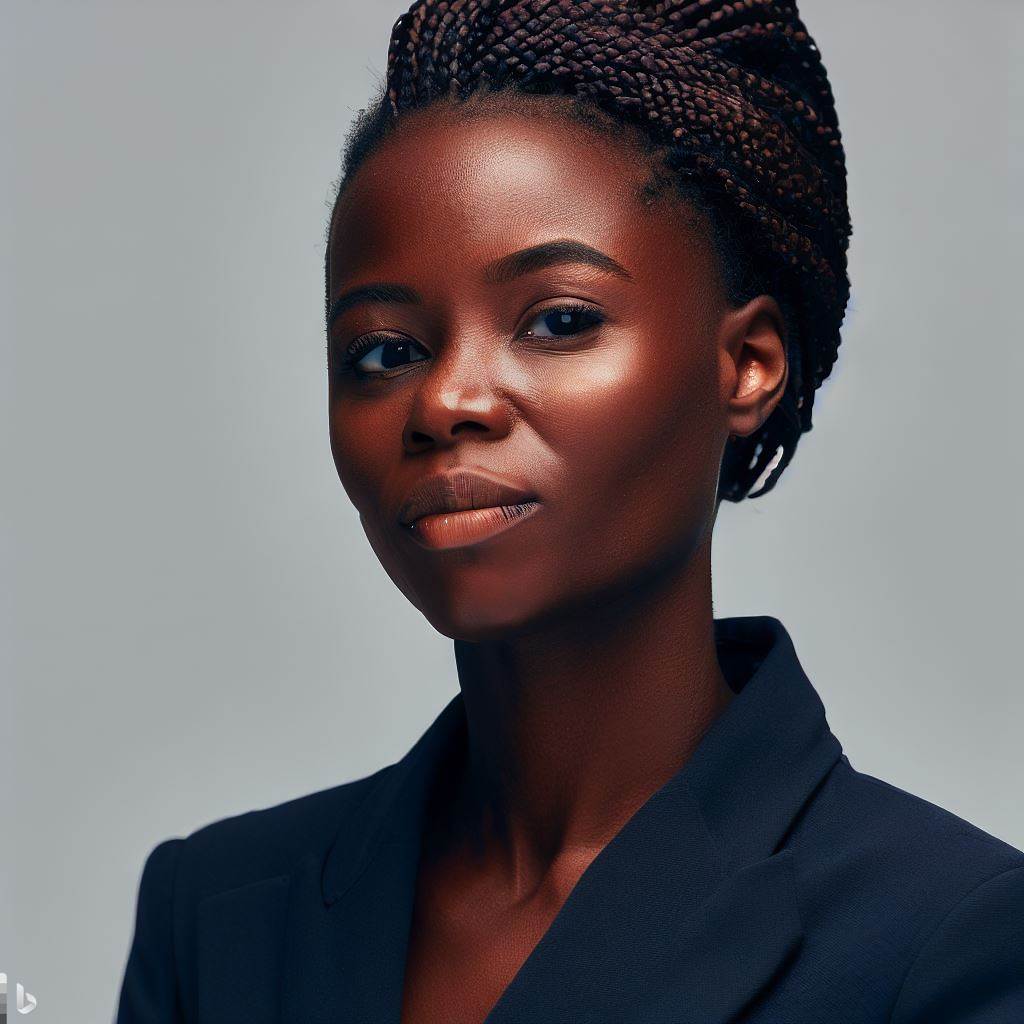Introduction
Let’s explore tools every production designer needs in Nigeria.
In Nigeria’s entertainment industry, a production designer plays a crucial role in bringing visual elements to life. They are responsible for creating the overall look and feel of a film, TV show, or stage production.
Having the right tools is essential for production designers as it enables them to effectively bring their creative vision to reality.
Without the necessary tools, their ability to design and execute production sets may be hindered.
The purpose of this blog post is to shed light on the essential tools that every production designer should have in Nigeria.
By identifying these tools, aspiring and established designers can ensure they are well-equipped to create stunning visual experiences in the entertainment industry.
Camera and Lighting Equipment
Camera and lighting equipment are crucial tools for production designers in Nigeria.
In this section, we will discuss the importance of high-quality cameras, different types of cameras suitable for various production needs, and the significance of adequate lighting equipment in creating desired moods and aesthetics.
Importance of High-Quality Cameras for Capturing Visuals
High-quality cameras ensure clarity and sharpness in visuals, enhancing the overall production value. These cameras capture minute details and enable designers to showcase their artistic vision effectively.
Such cameras provide better resolution, allowing for better color grading and post-production editing. They enhance the depth of field, ensuring a more immersive experience for the viewers.
With high-quality cameras, production designers can meet industry standards and compete on a global scale.
Different Types of Cameras Suitable for Various Production Needs
- DSLR cameras are versatile and widely used, offering good image quality and affordability.
- Cinema cameras provide exceptional image quality, dynamic range, and are suitable for professional filmmaking.
- Action cameras are compact and perfect for capturing fast-paced action scenes or shooting in extreme conditions.
- Camcorders are practical for recording live events and producing high-quality videos efficiently.
- Mirrorless cameras combine the benefits of DSLRs and compact cameras, offering versatility and image quality.
Importance of Adequate Lighting Equipment for Creating Desired Moods and Aesthetics
- Proper lighting equipment helps set the mood and atmosphere, allowing designers to create desired emotions.
- It accentuates the set design, props, and costumes, enhancing the overall visual appeal.
- Lighting can be used creatively to highlight specific elements and guide the viewer’s attention.
- It contributes to the overall aesthetics, making the production visually stunning and engaging.
- Adequate lighting ensures proper exposure, eliminating unwanted shadows and reflections.
In short, high-quality cameras play a vital role in capturing visuals, allowing production designers in Nigeria to showcase their artistic vision effectively.
Understanding the different types of cameras suitable for various production needs further empowers designers to choose the right equipment.
Additionally, adequate lighting equipment is essential for creating desired moods and aesthetics, enhancing the overall visual appeal of the production.
By investing in these tools, production designers can elevate their work and compete on a global scale.
Read: Freelancing as a Production Designer in Nigeria’s Scene
Computer Software and Design Tools
Highlight the significance of computer software in the production design process
Computer software plays a crucial role in the production design process in Nigeria. It revolutionizes the way designers work, saving time and enhancing creativity.
Designers can now easily visualize their ideas digitally, allowing for better communication and feedback with directors and clients.
Computer software also provides accurate measurements and precise scaling for set designs, ensuring everything fits perfectly within the given space.
This not only simplifies the construction process, but it also minimizes wastage of materials and reduces production costs.
Mention popular software used for designing sets and props, such as AutoCAD or SketchUp
AutoCAD and SketchUp are two popular computer software programs extensively used by production designers in Nigeria.
AutoCAD allows designers to create detailed 2D and 3D designs of sets and props, enabling them to visualize the final product.
SketchUp, on the other hand, offers an intuitive interface for designers to quickly sketch and model their ideas in 3D.
Both software programs provide powerful tools for creating accurate and realistic designs, enhancing the overall production value.
Introduce graphic design tools like Photoshop or Illustrator for creating concept art or storyboards
Besides set and prop designs, graphic design tools like Photoshop and Illustrator play a crucial role in the production design process in Nigeria.
These software programs are used by production designers to create concept art and storyboards that visually represent the intended atmosphere and narrative.
With Photoshop, designers can manipulate images and create stunning visual effects, adding depth and texture to their designs.
Illustrator, on the other hand, is ideal for creating precise and scalable vector illustrations, ensuring high-quality artwork for print and digital media.
Both graphic design tools allow designers to present their ideas effectively, aiding in securing approvals and funding for the production.
Computer software and design tools have revolutionized the production design process in Nigeria, offering enhanced creativity, improved communication, and cost-saving measures.
Popular software programs like AutoCAD and SketchUp enable designers to create accurate and realistic sets and props.
Graphic design tools like Photoshop and Illustrator allow for the creation of captivating concept art and storyboards.
By leveraging these tools, production designers in Nigeria can bring their creative visions to life and contribute to the success of the overall production.
Read: International Influence on Production Design in Nigeria
Art Supplies
Relevance of Traditional Art Supplies in Production Design
Traditional art supplies play a crucial role in the field of production design in Nigeria.
These supplies enable production designers to bring their creative visions to life by providing the necessary tools for sketching, painting, and crafting props and sets.
While digital tools are becoming more prevalent, traditional art supplies still offer unique benefits in the production design process.
Firstly, traditional art supplies allow for a more tactile and hands-on approach, which is essential in creating realistic and immersive sets.
The process of physically manipulating materials and creating textures adds authenticity to the props and sets, enhancing the overall visual experience for both the audience and the cast.
Moreover, traditional art supplies offer a wider range of natural colors and textures that are not readily available in digital formats.
This allows production designers to create a more nuanced and detailed visual representation of their ideas.
By mixing, blending, and layering various materials, an array of colors and textures can be achieved, adding depth and richness to the final product.
Additionally, traditional art supplies facilitate collaboration among the production team.
Physical sketches and prototypes can be easily shared and discussed, allowing for more effective communication and problem-solving.
This hands-on approach encourages teamwork and can lead to innovative solutions that improve the overall quality of the production.
Essential Art Supplies for Sketching, Painting, or Crafting Props and Sets
To successfully execute their designs, production designers in Nigeria require a range of essential art supplies for sketching, painting, and crafting props and sets. Some of these supplies include:
- Pencils and erasers: These are fundamental tools for sketching and creating initial designs. Pencils of various hardness and erasers of different types help achieve accurate drawings.
- Sketchbooks and paper: These provide a platform for designers to document their ideas, create rough sketches, and keep a visual record of their progress.
- Paint and brushes: Whether it is acrylic, watercolor, or oil paints, a variety of colors and brushes are essential for bringing vibrant and realistic colors to props and sets.
- Sculpting materials: Materials like clay, foam, and wire are used to sculpt and mold three-dimensional objects and create props or architectural elements.
- Adhesives and tapes: Strong adhesives and tapes are indispensable for securing various materials together and ensuring structural integrity.
- Cutting tools: Scissors, craft knives, and saws enable designers to cut materials accurately and efficiently, allowing them to bring their ideas to life.
- Rulers and measuring tools: These aids in achieving precision and maintaining proportion throughout the design process.
- Safety equipment: Safety goggles, gloves, and masks protect designers from potential hazards associated with various art supplies and materials.
Where to Find Art Supplies in Nigeria
There are several places in Nigeria where production designers can find art supplies to fulfill their creative needs. Some popular options include:
- Art supply stores: Specialized art supply stores offer a wide range of traditional art materials, catering to the needs of production designers. These stores can be found in major cities like Lagos, Abuja, and Port Harcourt.
- Online retailers: Numerous online platforms provide convenient access to art supplies. Websites like Jumia, Konga, and ArtMatters offer a variety of art materials and deliver them right to the doorstep.
- Local markets: Many Nigerian cities have local markets where art supplies are readily available at affordable prices. These markets offer a unique shopping experience and allow designers to find materials tailored to their specific needs.
In fact, traditional art supplies play a significant role in the production design process in Nigeria.
From sketching initial ideas to creating realistic props and sets, these supplies enable designers to bring their visions to life.
While digital tools have their place, the unique benefits offered by traditional art supplies cannot be overlooked.
With access to essential art supplies and knowledge of where to find them, production designers in Nigeria can channel their creativity and contribute to the vibrant world of Nigerian film and television production.
Read: Case Study: Influential Nigerian Costume Designers’ Journey

Props and Set Dressing
Importance of Having a Vast Collection of Props and Set Dressing Materials
The use of props and set dressing is crucial in creating believable and immersive production designs.
These elements add depth, context, and visual interest to the sets, making them essential in any Nigerian production.
Comprehensive List of Commonly Used Props in Nigerian Productions
- Furniture: Chairs, tables, sofas, beds, and other pieces create the setting and enhance the realism of the scenes.
- Kitchenware: Plates, cutlery, pots, and pans bring the kitchen scenes to life.
- Electronic devices: Televisions, radios, and phones are commonly seen in modern productions.
- Vehicles: Cars, motorcycles, and bicycles are often used to enhance the authenticity of outdoor scenes.
- Weapons: Guns, swords, and other weapons are essential for action-packed scenes.
- Clothing and accessories: Dresses, suits, hats, jewelry, and shoes help develop the characters.
- Books and documents: They add realism to office or library scenes.
- Musical instruments: Guitars, pianos, drums, and other instruments set the tone for music-related scenes.
- Decorative items: Paintings, vases, sculptures, and other objects contribute to the overall aesthetic.
- Personal belongings: Handbags, wallets, keys, and other personal items bring authenticity to character spaces.
Tips for Acquiring or Creating Unique and Authentic Props Locally
- Explore local markets: Visit open-air markets, thrift stores, and antique shops to find unique props.
- Engage local artisans: Collaborate with painters, sculptors, and craftsmen to create custom-made props.
- Utilize traditional crafts: Traditional Nigerian crafts like beadwork, pottery, and weaving can provide authentic props.
- Repurpose existing items: Transform regular household objects into props by adding modifications or painting them.
- Foster community connections: Network with local theater groups or film professionals for shared prop resources.
- Seek inspiration from Nigerian culture: Incorporate elements of Nigerian traditions and folklore into prop designs.
- Consider sustainability: Use recycled materials or environmentally friendly alternatives to create props.
- Experiment with DIY techniques: Learn prop-making techniques through online tutorials or workshops.
- Pay attention to details: Research specific time periods or cultural references to ensure prop authenticity.
- Document props for future use: Create a prop inventory or catalog to easily track and reuse items in future productions.
By having a wide array of props and set dressing materials, production designers can bring authenticity, creativity, and cultural depth to Nigerian productions.
This meticulous attention to detail enhances the overall viewing experience for audiences while showcasing Nigeria’s rich cultural heritage.
Read: Insider’s View: Day in the Life of a Nigerian Interior Decorator
Storage and Organization
Emphasize the need for an efficient storage and organization system for production designers
As a production designer in Nigeria, having an efficient storage and organization system is essential to ensure smooth and successful productions.
Without proper storage and organization, finding props and materials can be time-consuming and stressful, leading to delays and decreased productivity.
It is crucial to emphasize the importance of investing time and effort into creating a system that is easy to navigate and maintain.
This means having designated spaces for props, costumes, set pieces, and other essential production materials.
Discuss different storage options like shelves, bins, or digital asset management software
There are various storage options available for production designers in Nigeria. One common solution is using shelves to store props and materials categorically.
This allows for easy access and helps to prevent damage by keeping things organized and off the floor.
Another option is utilizing bins or crates, which can be labeled and stacked to optimize space and maintain a tidy storage area.
These bins can also be easily transported to different locations, ensuring all necessary materials are on set when needed.
In today’s digital age, production designers can also benefit from using digital asset management software.
This software allows for an organized database of props and materials, making it convenient to search and locate specific items quickly.
Provide tips for maintaining an organized inventory of props and materials
Keeping an organized inventory is paramount for production designers in Nigeria. Here are some tips to help you maintain an efficient storage system:
- Create an inventory list: Start by listing all the props and materials you have, including descriptions, quantities, and locations.
- Label everything: Use clear labels or tags to identify each item, making it easier to find specific props or materials when needed.
- Regularly declutter: Purge unnecessary items and donate or discard props that are no longer useful or in good condition.
- Implement a check-out system: Keep track of props and materials that are borrowed or rented by creating a check-out system to ensure everything is returned.
- Consider a color-coding system: Assign different colors to different categories of props or materials, allowing for quick visual identification.
- Periodic audits: Conduct regular audits of your storage space to assess and update your inventory list and ensure everything is in its proper place.
By following these tips and implementing an efficient storage and organization system, production designers in Nigeria can save time, reduce stress, and improve overall productivity.
An organized inventory allows for easier access to props and materials, ensuring a seamless production process.
Collaboration Tools
Highlight the significance of effective collaboration for production designers
Effective collaboration is essential for production designers as it fosters a cohesive team structure.
In a collective environment, ideas can be shared, refined, and transformed into exceptional production designs.
Collaboration encourages creativity, expertise exchange, and a deeper understanding of the project’s vision.
When production designers work together, they can tackle challenges, meet deadlines, and deliver outstanding results.
Effective collaboration also ensures that all aspects of the design process are seamlessly integrated.
Recommend digital tools like Trello, Slack, or Google Drive for seamless communication
Trello is a fantastic collaborative tool that allows production designers to organize and prioritize tasks effectively.
Through customizable boards, designers can create to-do lists, assign tasks, and monitor progress.
Slack enables real-time communication and promotes instant feedback among production designers, eliminating communication barriers.
With channels for different projects, Slack facilitates transparent and organized discussions.
Google Drive offers a centralized platform for sharing files, collaborating on documents, and storing essential project resources.
Discuss how these tools can enhance productivity and streamline the production design process
By using collaborative tools like Trello, production designers can streamline their workflow and increase productivity.
The ability to assign tasks and set deadlines ensures that everyone is on the same page and accountable for their responsibilities.
Real-time communication through Slack eliminates lengthy email chains and provides prompt solutions to design-related queries.
With Google Drive, production designers can access design briefs, reference materials, and project files at any time.
These tools foster efficient collaboration, saving time, reducing errors, and facilitating a smooth production design process.
Budgeting and Cost Estimation Tools
Discuss the role of budgeting and cost estimation in production design.
Budgeting and cost estimation play a crucial role in ensuring the success of any production design project in Nigeria.
They help production designers determine the financial resources needed and allocate them effectively. By estimating costs accurately, designers can avoid going over budget and manage expectations.
Publish Your Professional Profile, Business or Brand
Showcase your expertise, gain trust, and boost visibility instantly on Professions.ng.
Publish NowHaving a well-planned budget ensures that all aspects of production design are accounted for.
It allows designers to make informed decisions, negotiate contracts, and plan accordingly.
Introduce tools like Excel templates or specialized software for managing budgets
Excel templates are a popular choice for budgeting and cost estimation. They provide a structured format for organizing and tracking expenses, making it easier to manage budgets.
Specialized software, such as budgeting and accounting software, offer more advanced features. These tools automate calculations, generate reports, and provide comprehensive financial analysis.
They save time and effort, enabling production designers to focus on the creative aspects of their work.
Provide guidance on using these tools effectively in the Nigerian context
- First, familiarize yourself with the chosen tool, whether it’s an Excel template or specialized software.
- Explore its features and functions to optimize its use for budgeting and cost estimation purposes.
- Input accurate and detailed information to ensure precise estimations and effective budget management.
- Regularly update and monitor the budget to stay on top of expenses and make necessary adjustments.
- Consider local factors, such as currency fluctuations and market prices, when estimating costs in Nigeria.
Tips for Successful Budgeting and Cost Estimation in Nigerian Production Design
- Research local prices and rates: Familiarize yourself with the costs of materials, labor, and services specific to Nigeria.
- Consult industry professionals: Seek advice from experienced production designers or financial experts for accurate estimations.
- Plan for contingencies: Set aside a contingency fund to account for unforeseen expenses or changes in design requirements.
- Collaborate with the production team: Communication and coordination with the entire production team are essential for effective budget management.
- Regularly review and update the budget: Keep track of expenses, compare them with the estimates, and make adjustments as necessary.
- Document and analyze costs: Maintain detailed records of all expenses and analyze them periodically to identify areas for improvement.
- Communicate with stakeholders: Keep producers, directors, and other stakeholders informed about the budget status and any significant changes.
By utilizing budgeting and cost estimation tools effectively, production designers in Nigeria can ensure successful and financially sound projects.
Conclusion
A successful production designer in Nigeria requires the right tools to enhance their work.
Throughout this blog post, we have explored the key points in the importance of having the right tools for production designers in Nigeria.
Investing in the recommended tools can significantly improve the quality and efficiency of production design work. By having the necessary equipment, professionals can better bring their creative vision to life on screen.
It is crucial for production designers to explore and invest in the right tools to stay competitive in the industry.
From drafting software to lighting equipment, each tool plays a crucial role in achieving the desired aesthetic and delivering exceptional results.
As the film industry in Nigeria continues to thrive, it is essential for production designers to stay updated with the latest tools and technology to create compelling visual experiences.
By investing in these tools, designers can elevate their work and meet the demands of this rapidly growing industry.
In brief, having the right tools is vital for production designers in Nigeria. By using the recommended tools, designers can enhance their creative process, achieve remarkable results, and make a significant impact in the industry.
So, if you are a production designer in Nigeria, don’t hesitate to explore and invest in the recommended tools.
They will undoubtedly elevate your production design work and help you stand out in the competitive industry.




